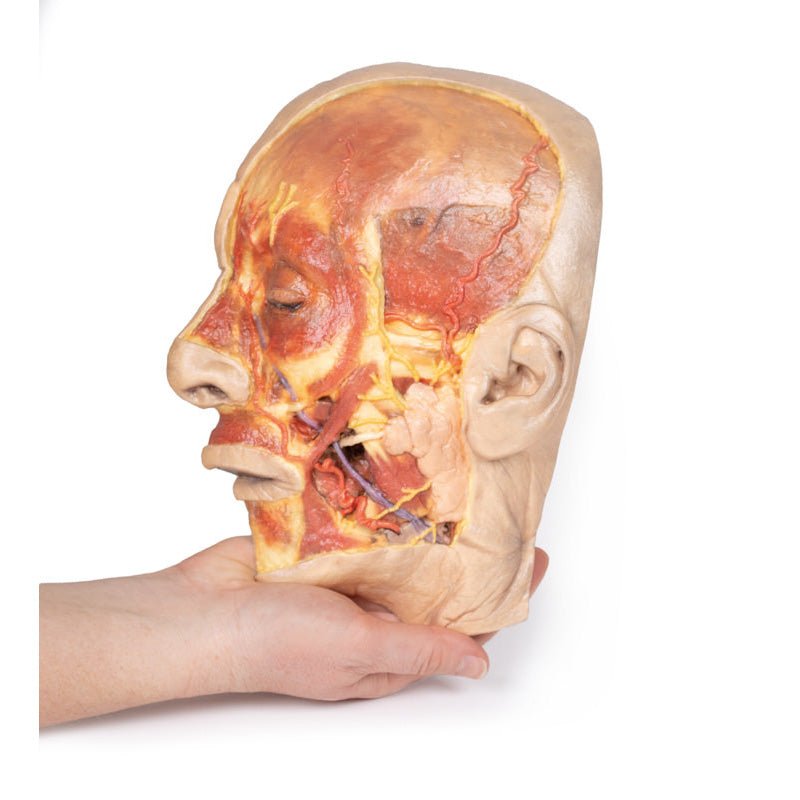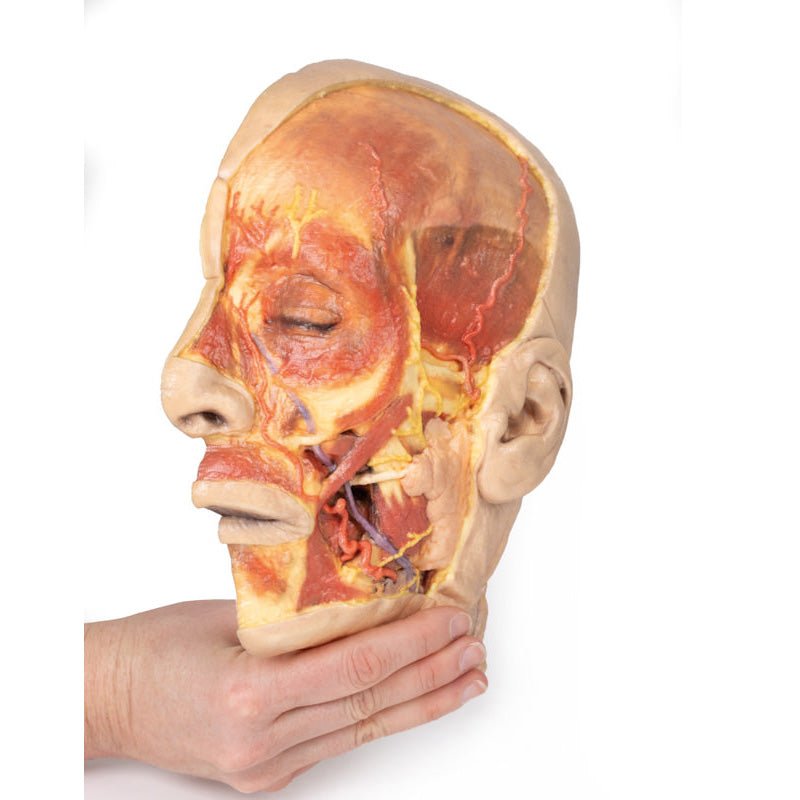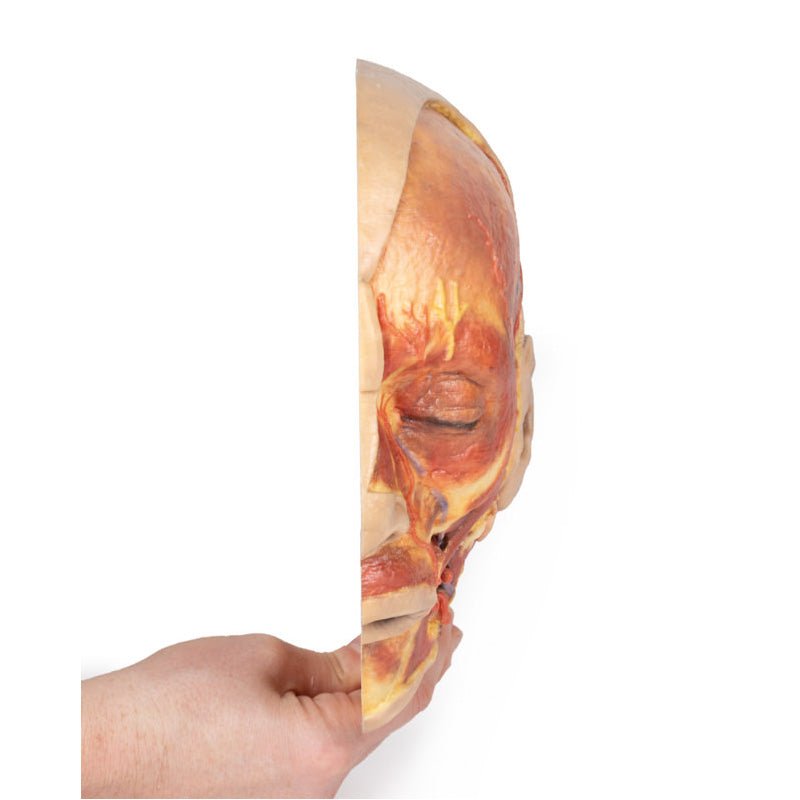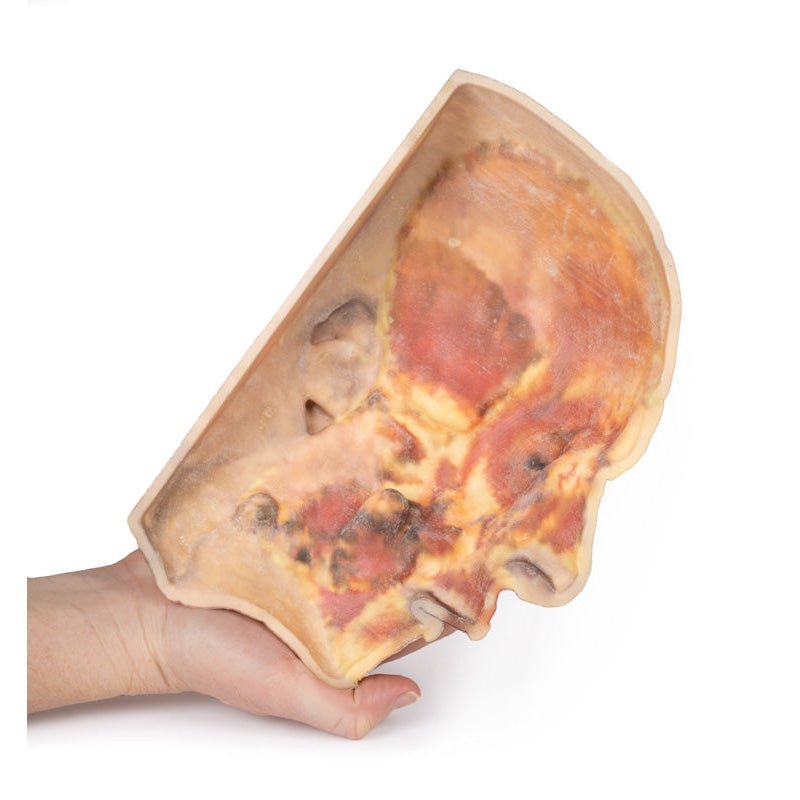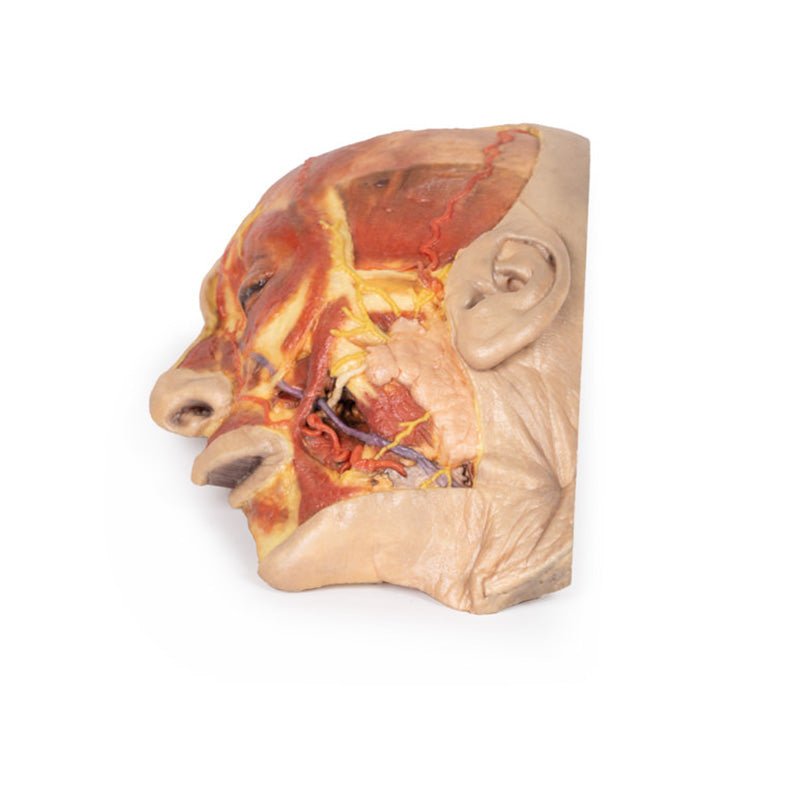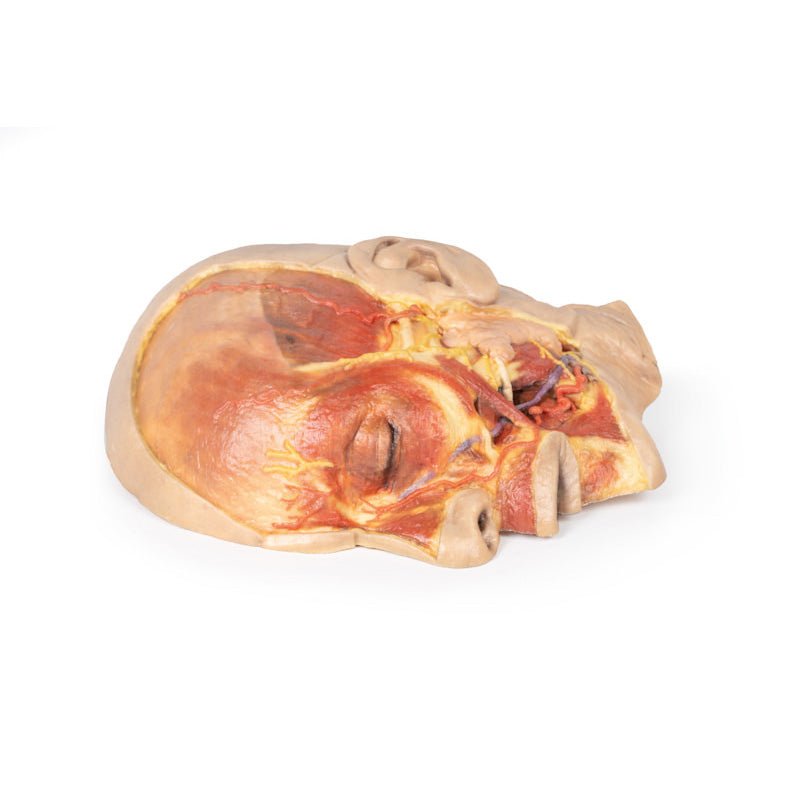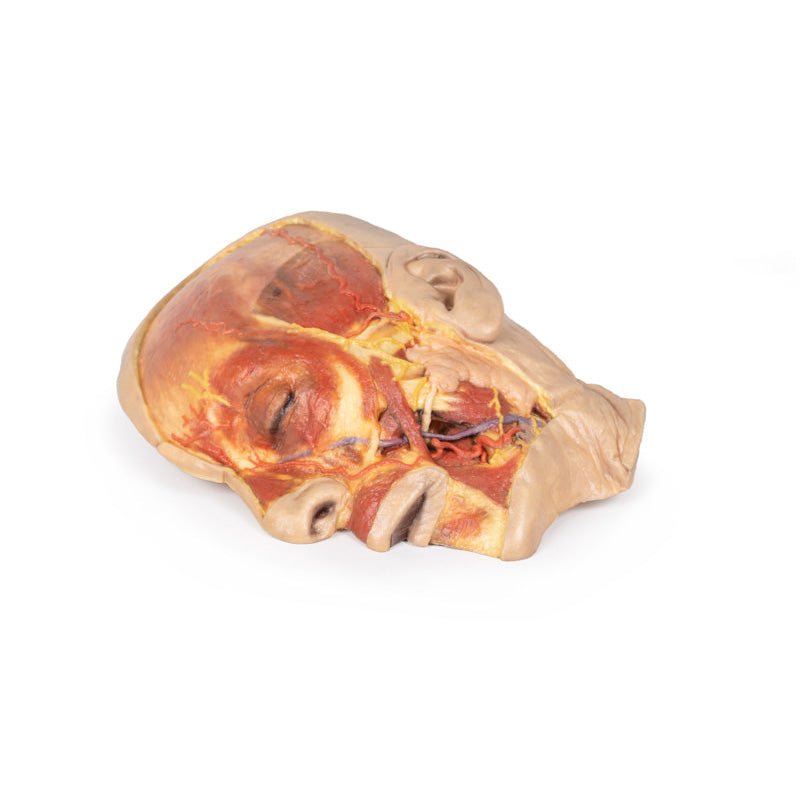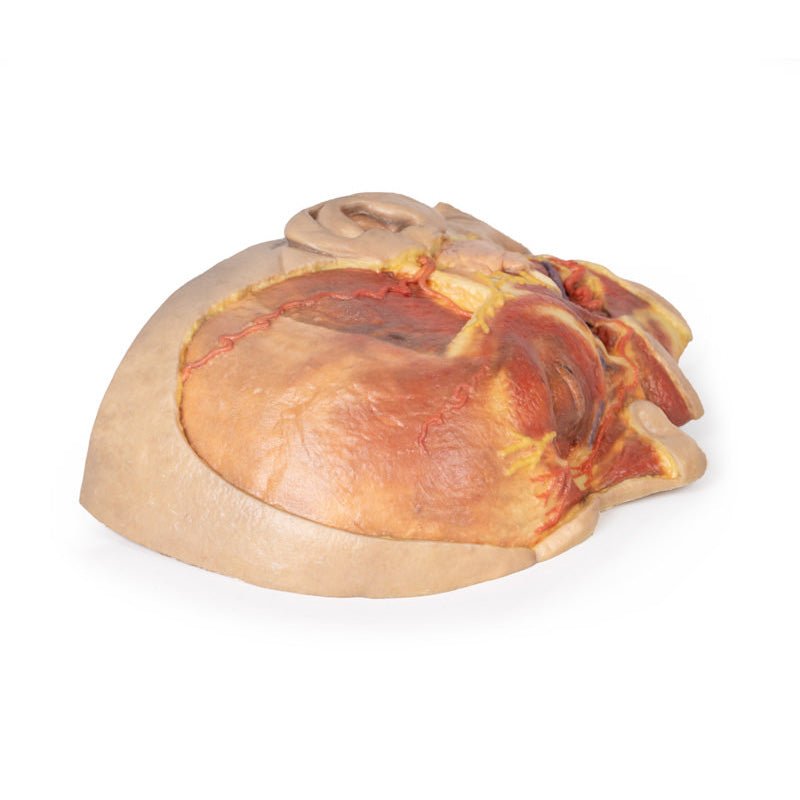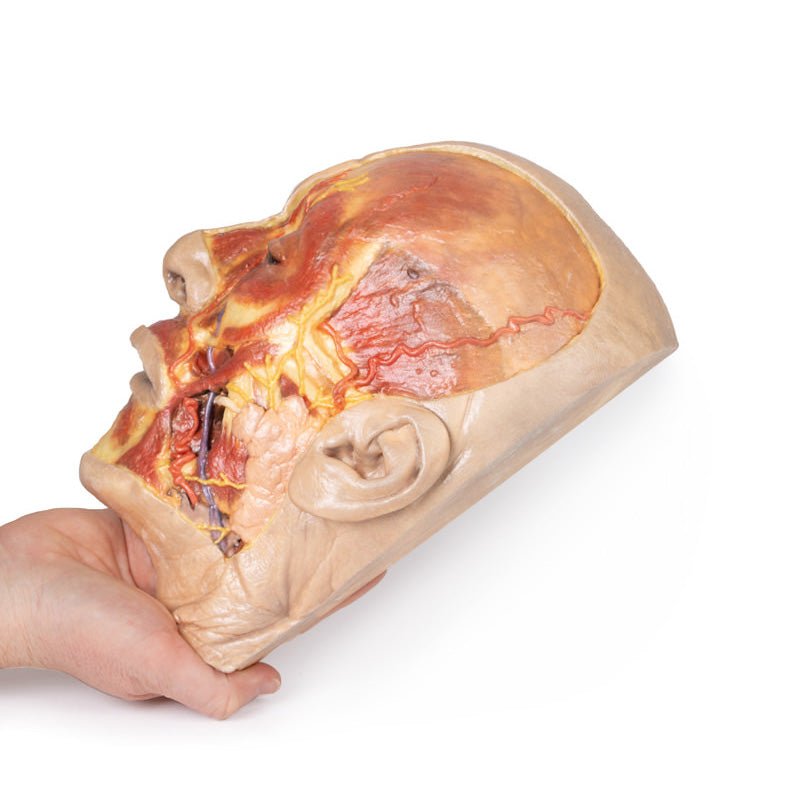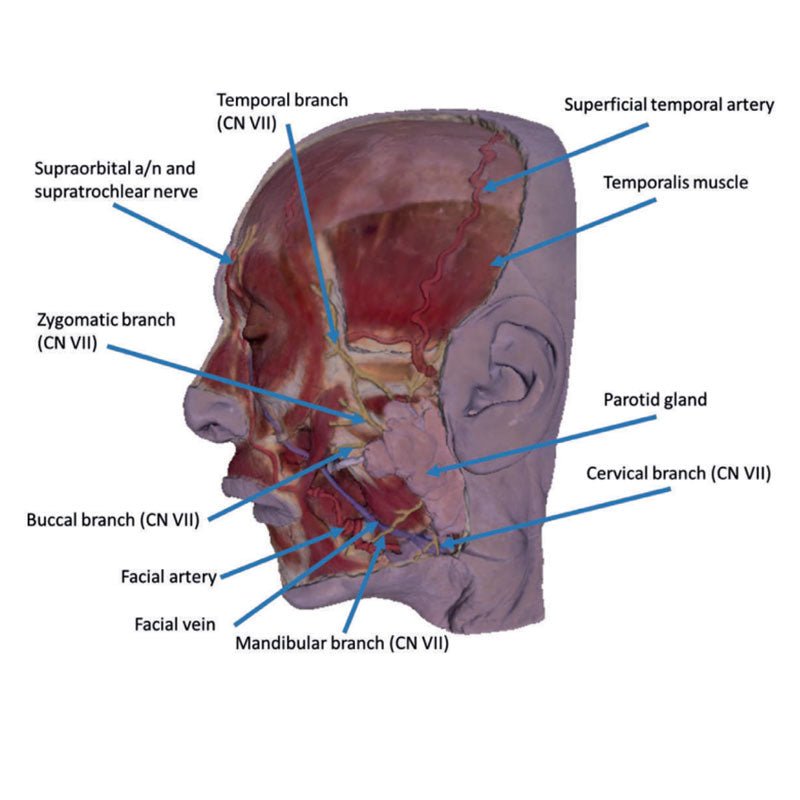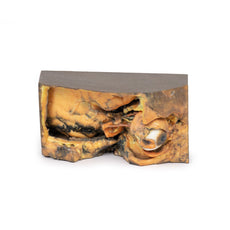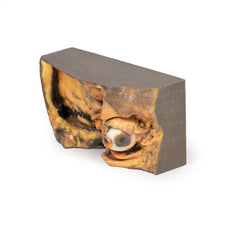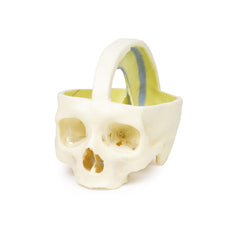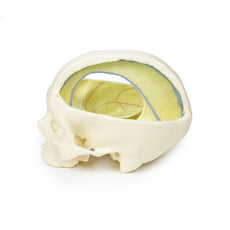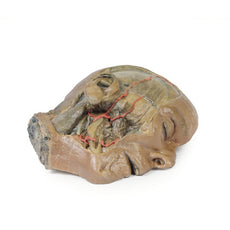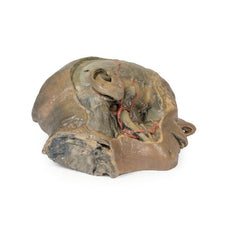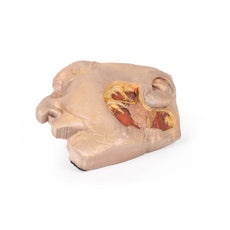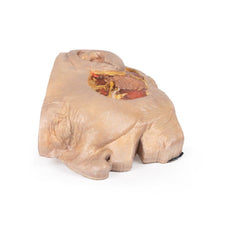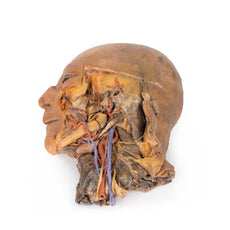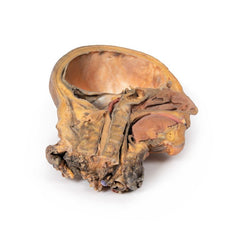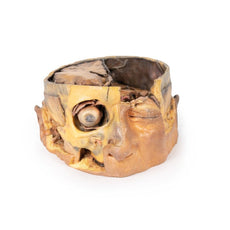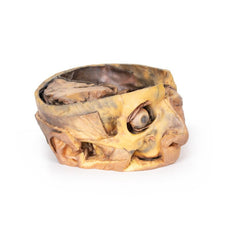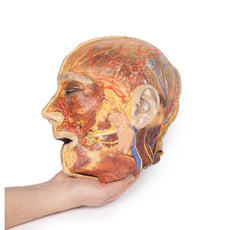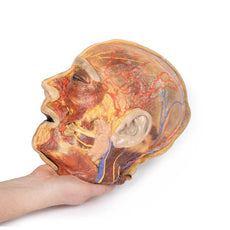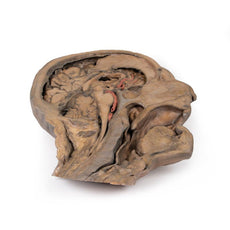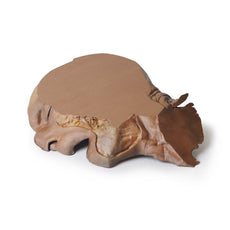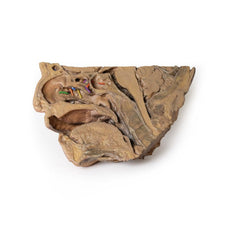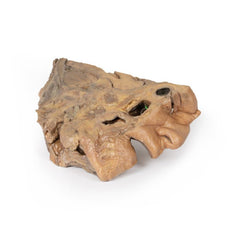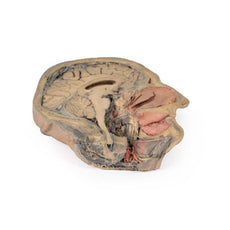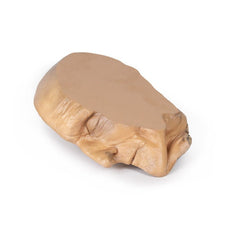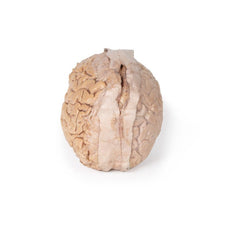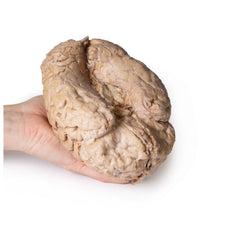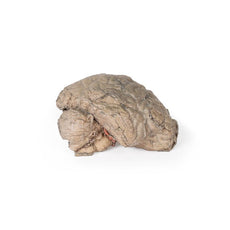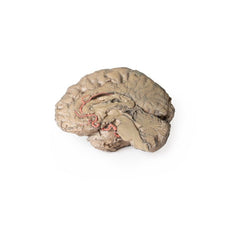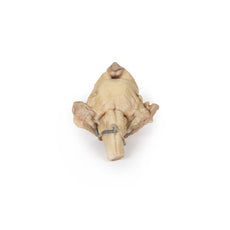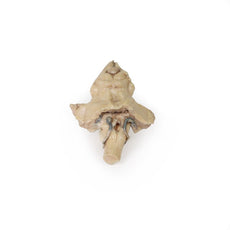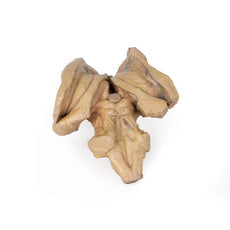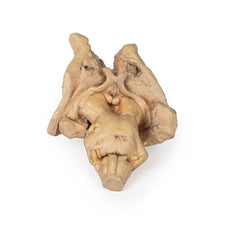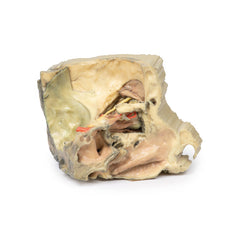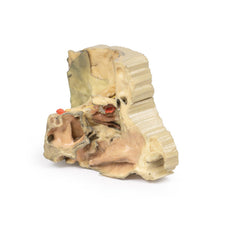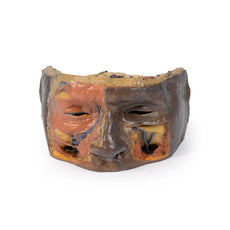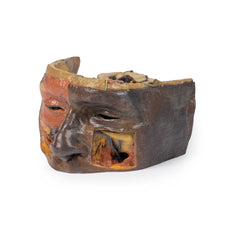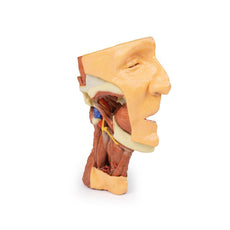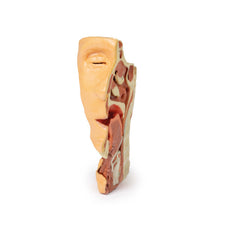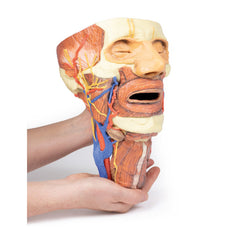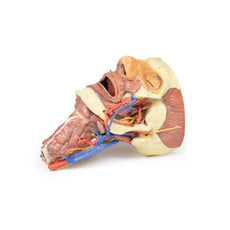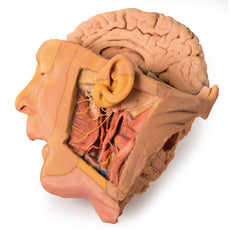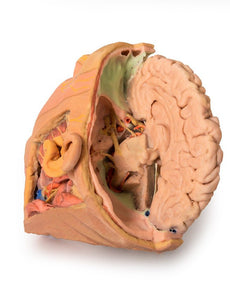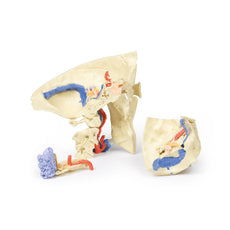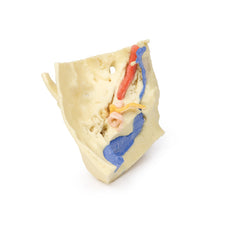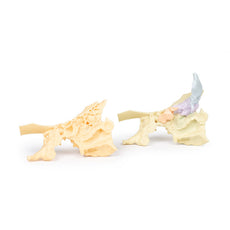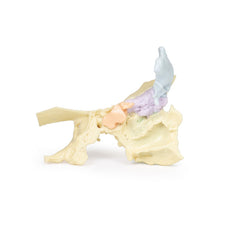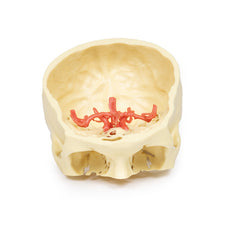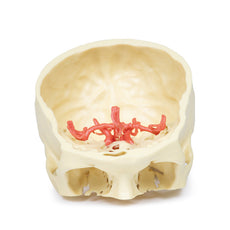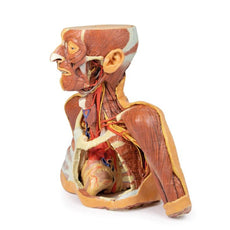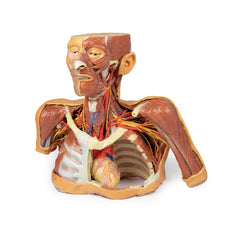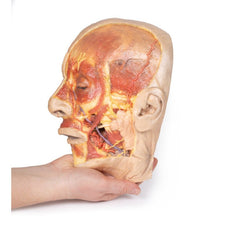Your shopping cart is empty.
3D Printed Superficial Face
Item # MP1108Need an estimate?
Click Add To Quote

-
by
A trusted GT partner -
FREE Shipping
U.S. Contiguous States Only -
3D Printed Model
from a real specimen -
Gov't pricing
Available upon request
3D Printed Superficial Face
This 3D model presents a superficial dissection of a left face anterior to the ear with false colouring highlighting
a series of neurovascular structures alongside the superficial muscles of facial expression. This compliments the
more expanded superficial dissection of the face and lateral head presented in our HW 45 model. The undissected
regions of the model have been digitally removed.
Starting just anterior to the ear, the opened window of
dissection has exposed the parotid gland and associated duct transmitting anterior towards the oral cavity. Exiting
from the margins of the parotid gland are terminal branches of the facial nerve (CN VII), including the cervical,
mandibular, buccal, zygomatic and temporal. The cervical and mandibular branches at the inferior portion of the
dissection window can be seen angling inferiorly and passing superficially relative to the facial vein (which
ascends towards the medial canthus of the eye). The mandibular branch passes just deep to the facial artery, which
runs in parallel with the facial vein. Tracing the pathway of these vessels from the mandible towards the nasal and
orbital regions also provides a checklist of superficial and deep muscles that have been highlighted, from the
masseter deep to the parotid through to the depressor anguli oris, depressor labii inferioris, the zygomaticus major
and minor, the orbicularis oris, the nasalis and levator labii superioris alaeque, the procerus and the orbicularis
oculi.
Along the superior margin of the parotid gland the base of the auriculotemporal nerve and the superficial
temporal artery ascends anterior to the ear and rests on a partially dissected temporal fascia to expose part of the
temporalis muscle. Moving anteriorly over the orbit, the supraorbital nerve and supraorbital and supratrochlear
arteries have been highlighted and ascend on the epicranial aponeurosis. Within that layer the deeper frontalis
muscle can be appreciated as a darker shadow within the layer.
 Handling Guidelines for 3D Printed Models
Handling Guidelines for 3D Printed Models
GTSimulators by Global Technologies
Erler Zimmer Authorized Dealer
The models are very detailed and delicate. With normal production machines you cannot realize such details like shown in these models.
The printer used is a color-plastic printer. This is the most suitable printer for these models.
The plastic material is already the best and most suitable material for these prints. (The other option would be a kind of gypsum, but this is way more fragile. You even cannot get them out of the printer without breaking them).The huge advantage of the prints is that they are very realistic as the data is coming from real human specimen. Nothing is shaped or stylized.
The users have to handle these prints with utmost care. They are not made for touching or bending any thin nerves, arteries, vessels etc. The 3D printed models should sit on a table and just rotated at the table.




